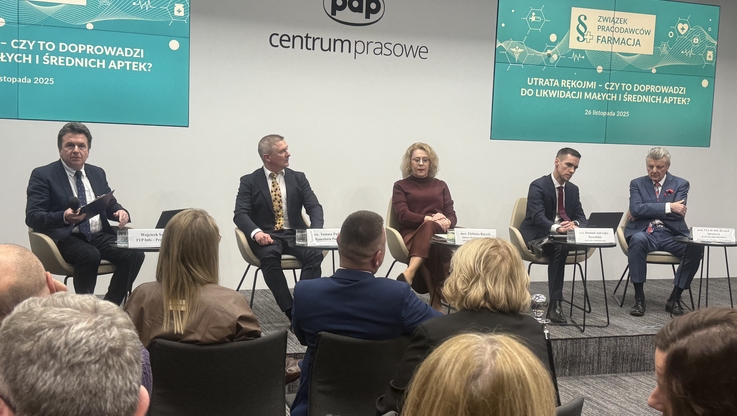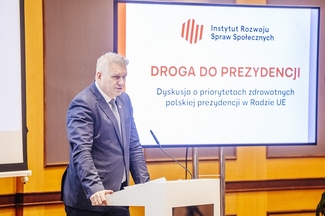Pobierz materiał i Publikuj za darmo
BOSTON, MA (February 12, 2013) - Global Sportlifestyle company PUMA launches InCycle, the brand’s first closed-loop collection of footwear, apparel and accessories, all of which have earned the "Cradle to Cradle CertifiedCM Basic” certification. PUMA’s InCycle products are entirely biodegradable or recyclable. This product introduction is another important step in PUMA’s mission to become the most sustainable and desirable Sportlifestyle company.
"PUMA’s Cradle to Cradle CertifiedCM Basic InCycle products represent a tremendous step forward in reducing our environmental footprint and giving consumers a more sustainable product choice. The InCycle Basket and Basket Tee Biodegradable have been analyzed as part of PUMA’s first Product Environmental Profit and Loss Account published in October 2012 and the results speak for themselves, showing that these two products impacted the environment by a third less than their conventional counterparts” said Reiner Hengstmann, Global Director of PUMA Safe.
The PUMA InCycle Collection was born from PUMA’s challenge to produce a fully recyclable or biodegradable collection as part of the learning journey to improve the sustainability of its products. PUMA collaborated with EPEA, to develop the collection, whose mission it is to help companies fulfill the Cradle to Cradle Products Innovation Institute’s criteria for the design of ecologically and intelligently designed products. All products in the InCycle collection have been certified by the Cradle to Cradle Products Innovation Institute, whose mission is to provide a continuous improvement quality program to guide product manufacturers and designers in making safe and healthy products for our world. Cradle to Cradle has created a rigorous certification program that rates products against five sustainability factors: 1) the use of environmentally safe and healthy materials; 2) design for material reutilization including recycling and composting; 3) renewable energy and management of carbon; 4) water stewardship; and 5) social fairness.
"We are delighted to have PUMA, such a powerful global brand, showing consumers and industry peers exactly what is possible through the adoption of the Cradle to Cradle Certified Products Program,” said Bridgett Luther, President of the Cradle to Cradle Products Innovation Institute. “PUMA’s InCycle Collection raises the bar on what consumers can expect and what the apparel and textiles industries can deliver: products that are not only a delight to use and wear and but are also designed from the start to have a positive environmental footprint as they biodegrade safely to soil and are returned to industry as a valuable resource.”
The PUMA InCycle collection can be broken down using one of two processes: the Technical Cycle or the Biological Cycle. Materials within the Biological Cycle can be broken down by microorganisms into biological nutrients and will go back into the earth, thus making them biodegradable. Materials found within the Technical Cycle - such as metals, textiles, and plastics - can then be used to create new products.
InCycle Biodegradable Products
A precondition of biodegradable products is that they must be made only of biodegradable materials including organic fibers without toxic chemicals, and they have to follow certain international standards for composting. This ensures that the sourcing and manufacturing processes of biodegradable PUMA products create the least environmental impact possible.
Within the InCycle range, PUMA’s Basket Tee is fully compostable through industrial composting. PUMA’s Shopper is constructed with minimal materials, all of which can be reused.
The upper of the PUMA Basket lifestyle sneaker is made from a mix of organic cotton and linen while the sole is composed of the biodegradable plastic APINATbio©, a new material innovation that’s biodegradable. APINATbio can be shredded into its component materials and composted into natural humus that goes back into the ecosystem.
InCycle Recycled Products
PUMA’s recyclable InCycle products include the PUMA Track Jacket and the PUMA Backpack, which use homogenous materials to ensure they are fully recyclable at the end of their lifespans. The PUMA Backpack is made of polypropylene which can be broken down to the original substance and used again to make new backpacks.
The recyclable PUMA Track Jacket is made from recycled polyester deriving from used PET bottles. To fully ensure the homogeneity of materials, the Track Jacket’s zipper is made from recycled polyester, as well. The InCycle PUMA Track jacket can be turned back into polyester granulate which then serves as a secondary raw material for other products made of recycled polyester, reducing the need for crude oil, energy and the amount of waste created.
To aid in the product collection and recycling process, PUMA has launched the "Bring Me Back" program globally within PUMA Stores and PUMA Outlets. PUMA has installed recycling bins instore where customers can return used shoes, clothing and accessories of any brand. The "Bring Me Back" program, which is run in cooperation with global recycling company I:CO, is designed to give consumers a convenient means of recycling products and lessening their environmental impact.
PUMA’s InCycle collection will be available in stores in March 2013 and online at puma.com. For further information about the InCycle Collection and the Bring Me Back Program visit www.puma.com/bringmeback.
###
Notes to editors:
Cradle to Cradle CertifiedCM is a certification mark licensed by the Cradle to Cradle Products Innovation Institute.
CONTACT:
Collette O’Neill
PUMA International PR
phone: +49 151 44877496
e-mail: collette.oneill@puma.com
Source: APA-OTS
Pobierz materiał i Publikuj za darmo
bezpośredni link do materiału
| Data publikacji | 12.02.2013, 10:49 |
| Źródło informacji | PAP |
| Zastrzeżenie | Za materiał opublikowany w serwisie PAP MediaRoom odpowiedzialność ponosi – z zastrzeżeniem postanowień art. 42 ust. 2 ustawy prawo prasowe – jego nadawca, wskazany każdorazowo jako „źródło informacji”. Informacje podpisane źródłem „PAP MediaRoom” są opracowywane przez dziennikarzy PAP we współpracy z firmami lub instytucjami – w ramach umów na obsługę medialną. Wszystkie materiały opublikowane w serwisie PAP MediaRoom mogą być bezpłatnie wykorzystywane przez media. |






